Author: Thor & Donovan Choy
Translation: Felix, PANews
Ethena recently announced the launch of the second season event Sats, which is expected to last until September 2, or until the TVL of USDe reaches 5 billion USD. If you missed the first season, it's not too late to join the second season now. This article will analyze in detail three different Ethena strategies and their potential returns.
Before delving into the research, let's first understand some basic knowledge about the transactions.
Ethena is a protocol that issues USDe, a profitable synthetic dollar/stablecoin. When you purchase USDe, you can accumulate points (Sats). These points will count towards the rewards of ENA (Ethena's governance token) that you will eventually receive.
Pendle is a yield trading dapp that splits yield tokens into principal tokens (PT) or yield tokens (YT). PT allows users to have an independent principal exposure, while YT allows holding independent yield exposure. Since YT does not include principal, the value of YT tokens will tend towards zero on the expiration date. For the strategies discussed in this article, the focus is mainly on YT.
For example: The annualized yield of 1 USDe is 17%. When you purchase USDe YT tokens on Pendle, the YT tokens only include your 17% yield + the points accumulated on the underlying protocol (in this case, Ethena).
- In addition to the Ethereum mainnet, Pendle is also deployed on the Layer2 blockchains Mantle and Arbitrum.
In summary, the following introduces three popular airdrop mining strategies for the second season:
- Low risk: Hold USDe on Ethereum (5x sats/day), or lock it for at least 7 days (20x sats/day)
- Medium risk: Purchase USDe YT (yield tokens) on Pendle
- High risk: Lock ENA, Ethena's governance token, and purchase USDe YT on Pendle at a 1:1 ratio
To estimate the potential investment return, a key question needs to be answered: How many Sats will be released by the end of the second season? Based on the answer to this important question, airdrop allocation can be quantified, and the strategy that can provide the best return can be determined.
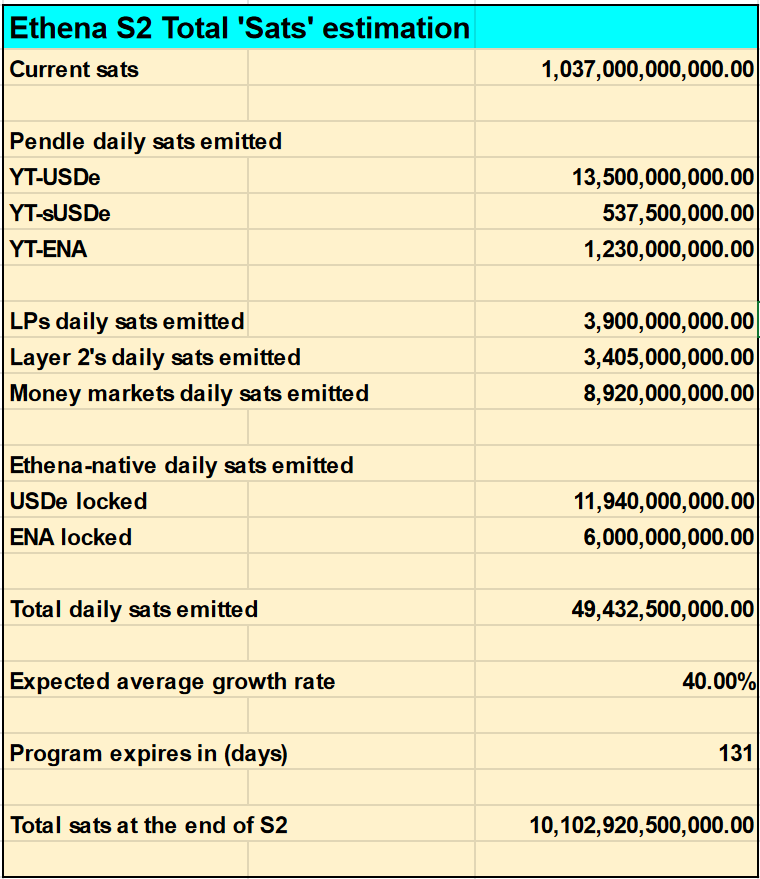
Note that the points for USDe or ENA on CEX wallets are not considered.
Here, the conservative estimate for the growth rate of Sats is 40%, and by the end of the second season (September 2, 2024), a total of 10.1 trillion Sats will be released. If the total TVL reaches 5 billion USD, the second season will also end. However, the current TVL level is 2.4 billion USD, and it is unlikely to reach this point ahead of time.
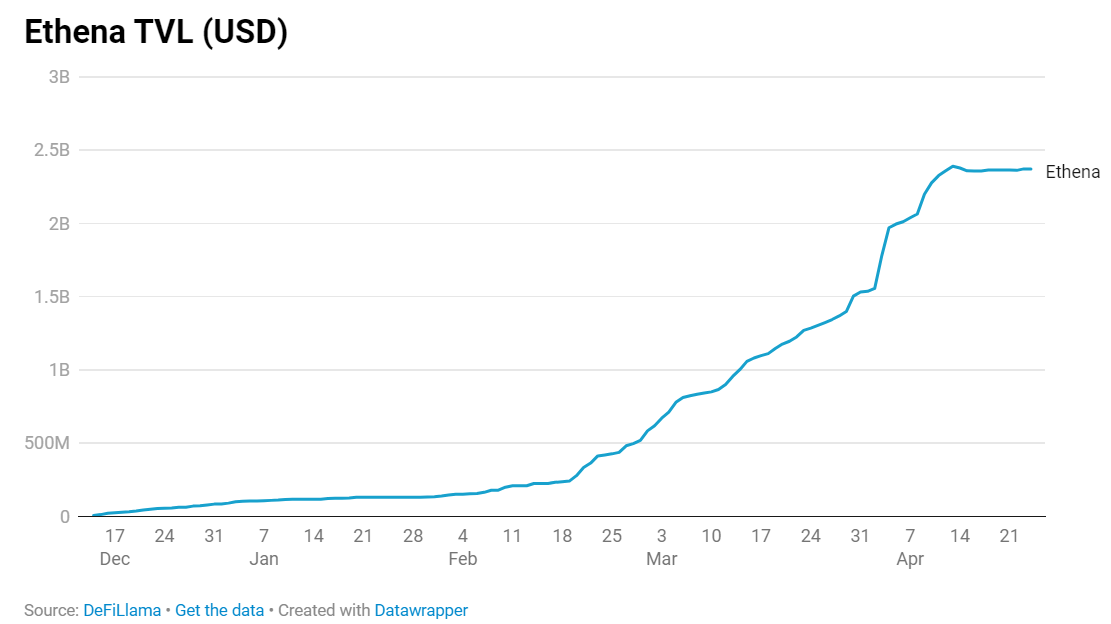
First Strategy: Hold and Lock USDe
Now let's calculate the investment return for only holding USDe, which is the lowest risk strategy. Here are 2 assumptions:
- 5% airdrop allocation (assuming the same as the first season)
- Total airdrop value estimated at 20 billion USD FDV (currently 14.4 billion USD)
As shown in the table below, if you lock 20,000 USD at a 20x rate today (with 130 days left in the second season), you will receive a profit of 5,186 USD, with an ROI of 25.93% or an APY of 72.45%.
Unlike the subsequent strategies, you can retain the entire principal because this strategy does not involve Pendle.
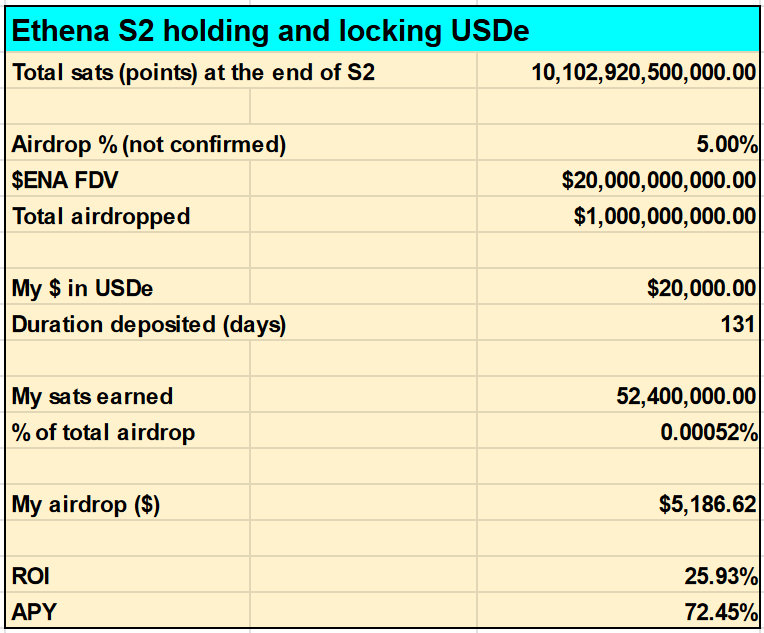
Second Strategy: Pendle YT Strategy
Now let's look at the medium-risk strategy of earning sats using Pendle's USDe YT on the Ethereum mainnet.
For the same 20,000 USD (but with a different term of 92 days), you will receive a net return of about 23,700 USD, which is about 4 times that of the first strategy, with an ROI of 118.55% and an APY of 331.22%. It is worth noting that the value of YT tends towards zero at the expiration, so the 20,000 USD principal will be deducted.
Please note that the expected returns in the following calculations are based on the current leverage of Pendle. The YT leverage is influenced by the demand for YT in the market and the expiration dates of the Pendle pools.
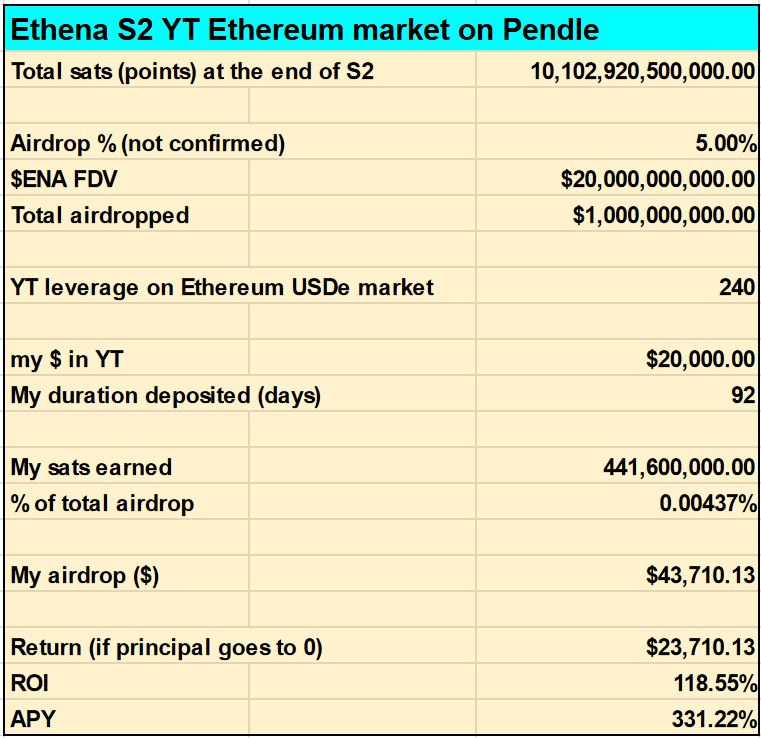
Ethereum Pendle Pool
If the same strategy is deployed on the Arbitrum Pendle pool, the ROI and APY are slightly lower. This difference is also due to the different levels of YT leverage in these pools.
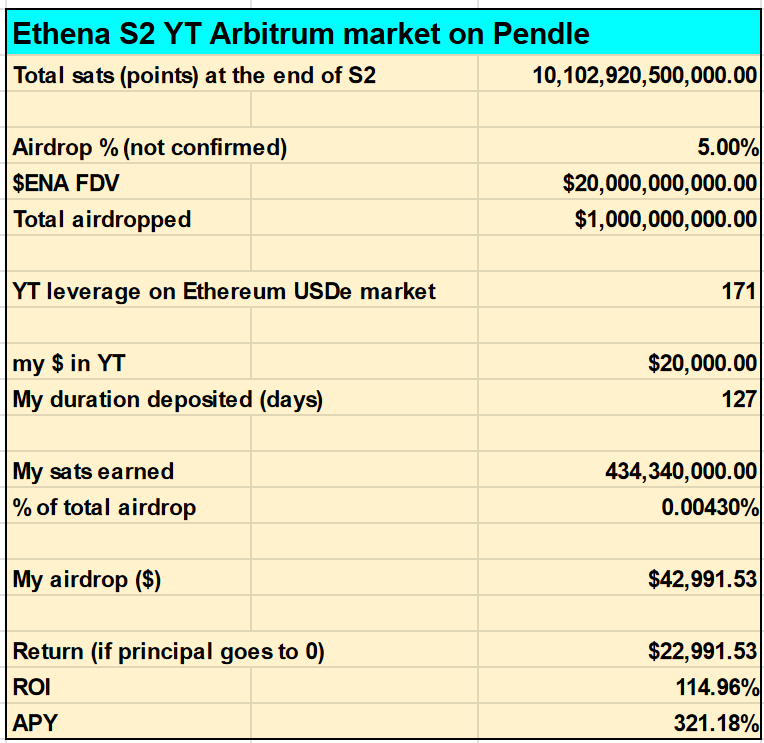
Arbitrum Pendle Pool
You can also choose to deploy the same strategy on the Mantle or Zircuit Pendle pools.
Third Strategy: Purchase ENA YT + USDe YT
Finally, let's look at the highest risk strategy, which evenly allocates funds to lock ENA and purchase Pendle's USDe YT.
Why such complexity? Because users who lock ENA in their wallets for at least 50% of their total USDe holdings will receive a 50% reward. By placing both YT-ENA and YT-USDe in the same wallet, the total reward for YT-USDe in both pools will increase by 50%.
This may also be the strategy of the smartest YT traders, who fully utilize the airdrop rewards obtained in the first season to achieve higher efficiency in accumulating sats in the second season.
As you can see, this strategy achieves the highest return on Pendle (Arbitrum). The ROI is 162.56%, and the APY is 454.17%. This higher reward is equivalent to the higher risk taken by traders who must lock ENA.
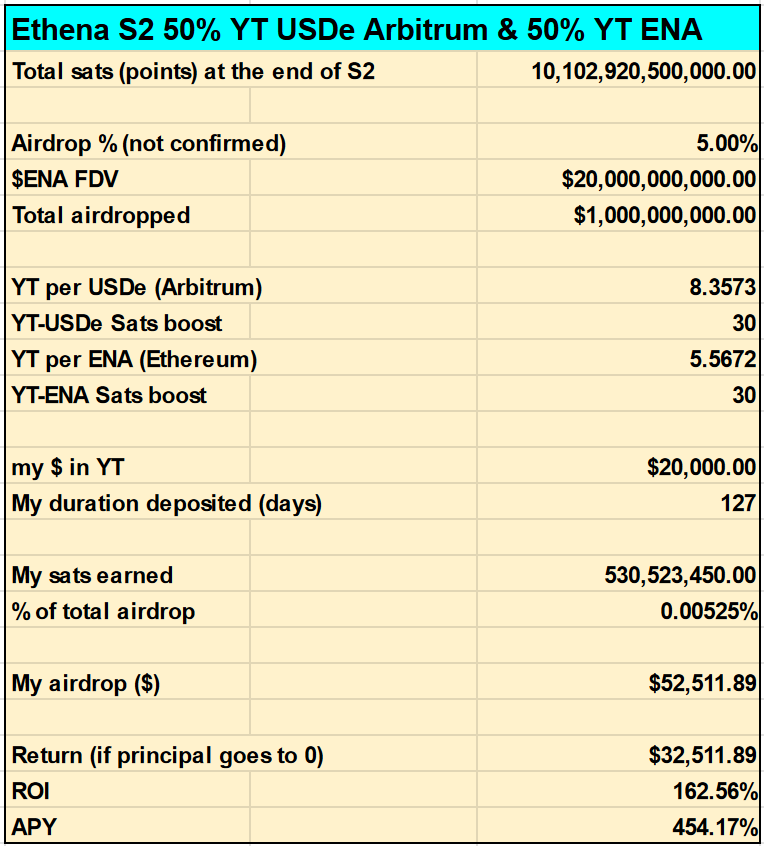
Arbitrum USDe Pool and Ethereum ENA Pool
Related reading: Ethena Research Report: Where Does the 27% Annualized Yield of USDe Come From?
免责声明:本文章仅代表作者个人观点,不代表本平台的立场和观点。本文章仅供信息分享,不构成对任何人的任何投资建议。用户与作者之间的任何争议,与本平台无关。如网页中刊载的文章或图片涉及侵权,请提供相关的权利证明和身份证明发送邮件到support@aicoin.com,本平台相关工作人员将会进行核查。




